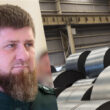Since the beginning of the war, or so-called “special operation,” every aspect of it was filled with tons of disinformation, fake news, and propaganda from Russia
First, Kremlin has created an artificial pretext for launching the attacks – several provocations near the previously occupied parts of Donetsk and Luhansk regions, which portrayed Ukraine as an aggressor. Then, with an official start of the war, Russia launched a massive information campaign. Most of the efforts were focused on denying any losses of the Russian Armed Forces (RAF), underlining that the Russian army uses only high-precision weapons and only against military targets, avoiding attacks on civil infrastructure. Also, “logical” connections with WWII were established, while Putin periodically used narratives about Russia’s fight against the Nazis.
Actually, the Russian media has created an alternative reality for its own citizens, telling that the Ukrainian government is one step from surrender, and that the Ukrainian army has been firing on their own citizens and civil infrastructure.
At the same time, Russia uses media and social networks as another battleground to spread panic and calls for surrender. For that, Russian forces create lots of pages or channels, which are imitating Ukraine’s official resources (like Verkhovna Rada and the Ministry of Defence) or international media, like CNN. Most recent efforts – creating Facebook pages of Ukrainian military units, with posts about fake surrenders, soldiers’ refusal to fight, desertions by their commanders. All narratives are very similar to those used in 2014-2015 during the active phase of the war in Donetsk and Luhask regions. Such webpages typically use official logos, identification symbols, Ukraine’s uniforms, etc.
One of high-intensity attempts was a spread of fake news about resignation of President Zelensky and Ukraine’s capitulation, a deepfake technic. To carry it out, the Kremlin tried to disrupt Ukraine’s official media network by demolishing the main TV broadcasting tower in Kyiv on March, 1st, capturing TV towers across Ukraine, and disrupting mobile communication infrastructure.
In the next few days, one can expect an increase of Russian subversive efforts in the Ukrainian media sphere because they need to create favorable conditions for the possible second wave of assault of their armed forces
The hottest topic for the Russians right now is to blame Ukraine for creating so-called dirty bombs that have radioactive materials. It comes only a few days after the Russian forces captured the Nuclear Power Plant in Zaporizhzhia. The attack with heavy shelling against the power plant led to a fire in one of the administrative buildings. Only after long negotiations, Ukrainian firefighters were allowed to enter the buildings. Such Russian actions could pose a real threat to the whole world because in a worst-case scenario, that could lead to a massive nuclear disaster right at the center of Europe and the radioactive dust could spread all over the planet. In order to deny Russia’s responsibility, the Russian media cited an unnamed source that had informed them that Ukraine’s production of a plutonium-based “dirty bomb” was underway. Yet as always, they provided no evidence. The other possible goal of this fake news is to ruin international solidarity with Ukraine and to tarnish the image of the Ukrainian government so that the military assistance slows down.
In the next few days, one can expect an increase of Russian subversive efforts in the Ukrainian media sphere because they need to create favorable conditions for the possible second wave of assault of their armed forces. The recent ban of all international media and social networks in the Russian Federation will make it much harder for Russian citizens to get access to objective information.








